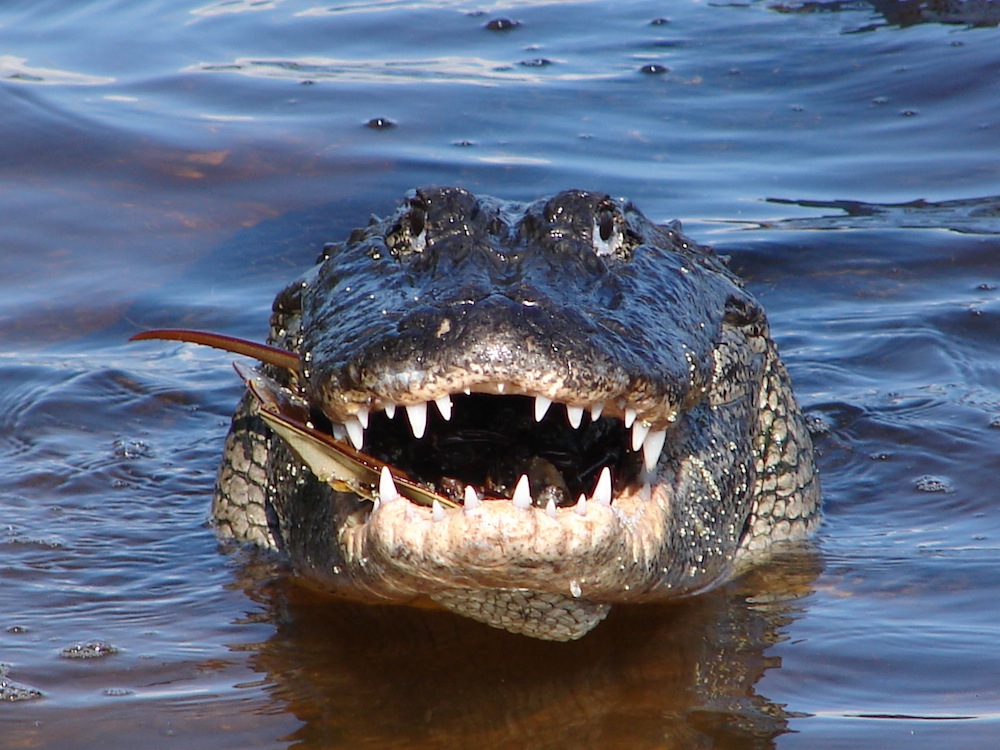Cannibalism Weeds Out Baby Alligators

Baby alligators can't depend on their elders for a helping hand. In fact, young gators are a perfect bite to eat for large gator adults.
Now, a new study finds that between 6 percent and 7 percent of young alligators fall victim to the cruel fate of cannibalism. On the other hand, a little gator-on-gator cannibalism may help keep their populations stable.
"Even the seemingly low rate of juvenile mortality attributed to cannibalism reported here may be an important factor in population regulation," researchers from the Florida Fish and Wildlife Conservation Commission wrote in June in the journal Herpatologica.
Gator-eat-gator
The researchers analyzed data from years of alligator tagging and tracking programs at Orange Lake, a shallow, marshy body of water near Gainesville, Fla. Between 1981 and 1987, 267 stomachs from adult alligators that had been killed by hunters were examined for tags in an effort to find out how many tagged alligators were being cannibalized by other gators.
Thirty-three of the stomachs contained tags, for a total of 56 tags in all. One particularly hungry gator had eaten at least 14 other alligators. The other gators carried a tag or two in their stomachs.
The records associated with the tags revealed that 91 percent of the cannibalism victims were under 3 years old, which is juvenile by alligator standards. [World's Cutest Baby Wild Animals]
Sign up for the Live Science daily newsletter now
Get the world’s most fascinating discoveries delivered straight to your inbox.
Calculating cannibalism
The next step was to figure out how this small cannibalism sample would translate to the entire population of Orange Lake gators. To do that, researchers needed to figure out how long tags tend to stick around in a gator's stomach without being excreted. So they fed 10 alligators five tags each (to simulate natural digestion, the tags were attached to alligator feet removed from dead hatchlings).
Over the next 588 days, the 10 gators got periodic X-rays to check for tags in their stomachs. As it turned out, the tags stuck around: At the end of the experiment, 76 percent of the tags, or 38 total, were still in the gators' guts.
Taking into account the size of Orange Lake's gator population and the likelihood of finding evidence of cannibalism, in the form of tags, in a guilty gator's stomach, the researchers estimate that about 6 percent to 7 percent of juvenile gators become dinner.
That rate could vary in other lakes and swamps, the researchers wrote, because the prevalence of cannibalism depends on the abundance of other food options. Understanding how often alligators chomp on each other is important, they added, because wildlife officials have to understand population dynamics in order to set goals for both gator protection and gator hunting.
You can follow LiveSciencesenior writer Stephanie Pappas on Twitter @sipappas. Follow LiveScience for the latest in science news and discoveries on Twitter @livescience and on Facebook.

Stephanie Pappas is a contributing writer for Live Science, covering topics ranging from geoscience to archaeology to the human brain and behavior. She was previously a senior writer for Live Science but is now a freelancer based in Denver, Colorado, and regularly contributes to Scientific American and The Monitor, the monthly magazine of the American Psychological Association. Stephanie received a bachelor's degree in psychology from the University of South Carolina and a graduate certificate in science communication from the University of California, Santa Cruz.










